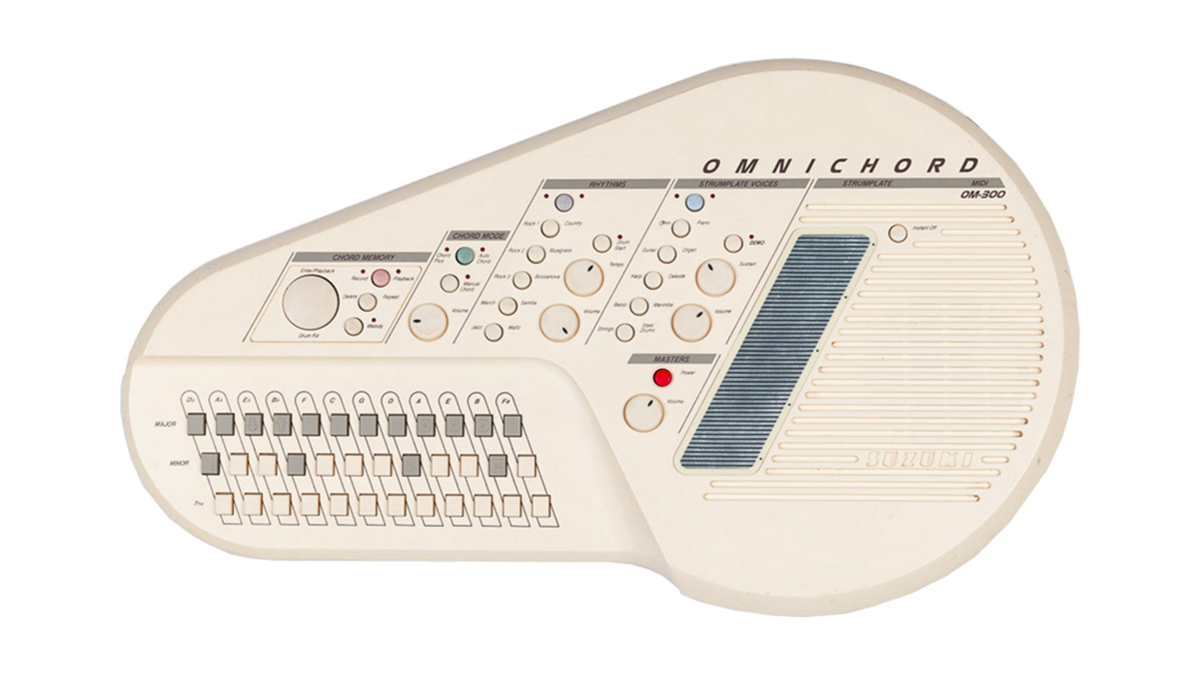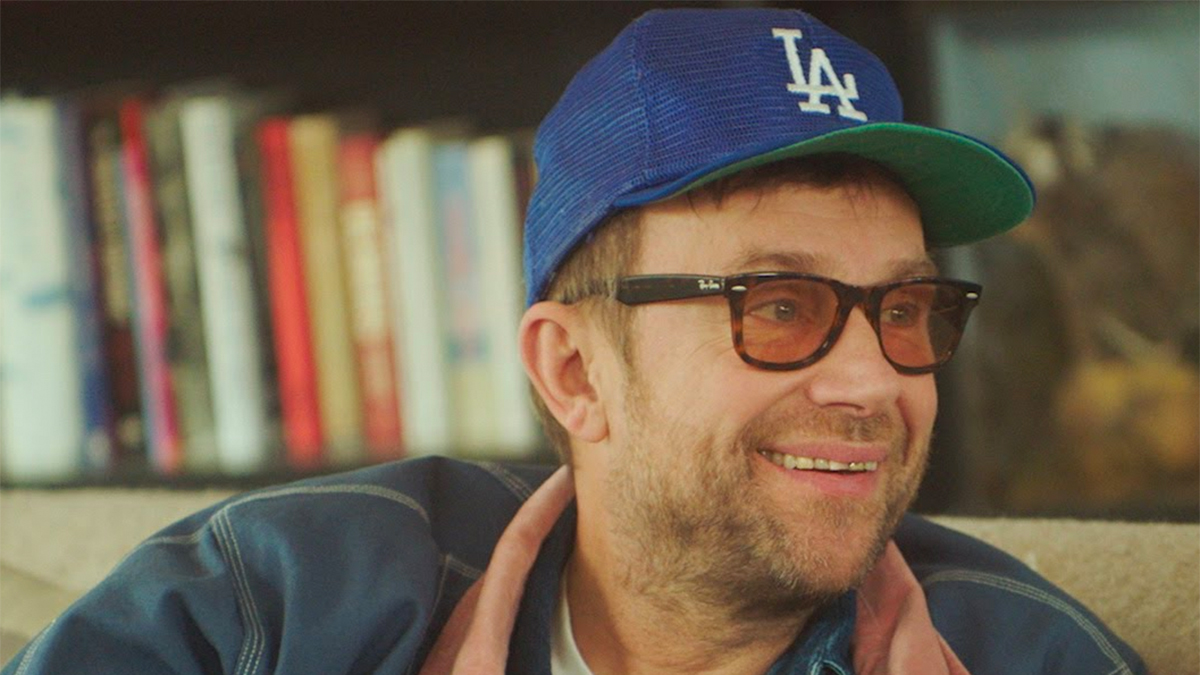Blast from the past: Suzuki Omnichord
As Suzuki celebrates its 70th anniversary with a new version of this curious instrument, we take a backwards glance at the history of the Omnichord

Say the word "Omnichord" to a non-musician and they will probably just stare back at you blankly. Find a music-maker and oddly, you might just get a similar response.
But every once in a while, you'll find a studio rat or session musician who has come across an Omnichord, and you might see a smile start spreading slowly across their face.
The Omnichord is one of those instruments that belongs in the category of cult classic, and those who know know that the Omnichord's star is rising once again. It sort of looks like an electronic auto-harp, but beneath its curiously beige surface lies a fair amount of magic, especially for those who haven't taken the time to study music theory at a Juilliard level.
Beneath the Omnichord's curiously beige surface lies a fair amount of magic
Originally conceived by engineers at Japan's Suzuki Corporation back in 1980, the Omnichord's life started out as a twin. These twins, as all twins do, came into the world as a pair—the PC-27 Portachord/Tronichord and the OM-27 Omnichord. The two instruments were similar in that both featured 27 buttons, each triggering a Major, Minor or 7th chord.
You "strummed" these chords using a playable touch-plate on the surface of the device, thus greatly reducing the amount of music knowledge or finger dexterity needed to strum through the chords of your favorite song. Both also featured a built-in speaker and the ability to run on either batteries or a power supply.
However the PC-27 was far less feature-bestowed, as it only featured two controls—chord volume and 'sonic strings' volume. Given that the PC-27 never made it past the prototype stage, we'll never quite know what it was destined for, but the Omnichord's fate was much different.
The Omnichord, or OM-27 as it was known at the time, also featured those same 27 chord buttons and playable strum pad but added a preset rhythm section similar to what you'd find on a Casio keyboard. Users could select a preset rhythm pattern, volume, and tempo. There was only one sound built-in to the OM-27, which Suzuki simply called "harp".
Want all the hottest music and gear news, reviews, deals, features and more, direct to your inbox? Sign up here.
However, it was possible to increase or decrease sustain with a dedicated knob, so it was possible to go beyond basic plucks, though not by much. There was also an auto-bass accompaniment feature, that while bas-ic (excuse the pun) did fill out the low-end enough to pretend there was a bassist jamming with you.
How successful the OM-27 was depends on who you ask. Some say it was a huge international success right away. Others say it took time to reach a sizable audience. Eventually it did find its way into the hands of some but Suzuki already had tweaks in mind. In 1984, Suzuki released two expanded models of the Omnichord—the OM36 and the OM84. Each of these expanded on the OM-27 by offering more chord shapes (36 and 84, respectively, as you'd expect from the names).
Both of these new instruments also featured a greatly improved strumplate that was said to increase dynamic response and range considerably. It must have worked, as the design of the strumplate remained largely unchanged for the rest of the Omnichord's manufacturing run. Interestingly, the OM-84 featured a dual response strum-plate, so two separate sustain settings were possible.
The next generation of the Omnichord was the OM-100. This version changed the ergonomics of the design considerably, angling the strumplate to make it more comfortable for users to play. It also upped the number of sounds possible from just the harp sound on the earlier models to a choice of ten sounds (Guitar, Piano, Banjo, Jazz Organ, Flute, Organ, Chimes, Brass, Vibes & Synth). Having these sonic options clearly upped what was possible from the Omnichord.
Shortly thereafter, in 1989, the OM-250 came out, which introduced yet another important update—a MIDI out port so that the Omnichord's useful chord mode could be used for external gear. This was a huge bonus, as it allowed the Omnichord to interface with other electronic gear. Electronic producers slowly started gravitating towards using it in the studio for its unique take on composing.
However the Omnichord continued to evolve over the years. The OM300 was released in the early 90's and featured a different set of included sounds, both MIDI In and Out ports, and a chord sequencer that allowed users to store chord progressions. In 1999, Suzuki re-introduced the Omnichord, hoping to drum up renewed interest in it, no doubt, as the Q-Chord.
The Q-Chord featured a purple color that you either love or hate, a cutaway by the chord buttons, a few new sonic features, but at its core it remained the same Omnichord using the same buttons and strumplate. Importantly, the Q-Chord added modern features like a better speaker and an expansion slot for storing songs. It also upped the ante in terms of sounds count—now the total number of sounds was up to 100. Unfortunately the Q-Chord didn't quite boost the sales like Suzuki had hoped and it eventually was discontinued.
Despite the fact that Omnichord was never hugely successful commercially, its unique approach to playing and strumming chords did mean it found its own fans. The Omnichord was particularly popular in Japan, where it became a cultural icon of the 1980s. It was often used in pop and electronic music, and it was even featured in advertisements for popular products such as Coca-Cola and Sony Walkman. Interestingly, it became hugely successful in the educational field, where music teachers used it as a quick way to make backing chord progressions for students to play along with.
But it also found its place in pop songs of the 80's and 90's. Canonical synth pop act The Human League was one of its most prominent users, so much so that they employed an "omnichord podium" in their live stage setups. The Talking Heads and Devo also famously employed its dulcet tones. David Bowie used an Omnichord in his poignant cover of Simon and Garfunkel's classic "America" at his 2001 Benefit for New York City show.

Brian Eno, Daniel Lanois and Joni Mitchell are all said to be fans, but maybe the most famous Omnichord fan is none other than Damon Albarn, who featured one of the Omnichord rhythm's wholesale on the Gorillaz track "Clint Eastwood". Playing his Omnichord for Apple Music DJ Zane Lowe in a video interview that came out recently, you can see the shock in Lowe's eyes as he discovers how much of the tune really came straight from the Omnichord.
While many did utilize the built-in rhythm section, like Albarn, others simply utilized it for the sound engine itself. Later models have more sonic variation but early versions of the Omnichord featured just enough sounds to keep users occupied. On the OM-300, for example, the choice of only one of 10 sounds (Omnichord, Guitar, Harp, Banjo, Strings, Piano, Organ, Celesta, Marimba and Steel Drums) means that there was only so many places it could go, sonically speaking.
In recent years, the Omnichord has enjoyed a resurgence in popularity, thanks in part to the renewed interest in vintage electronic instruments and the rise of electronic and experimental music genres. Many contemporary musicians and producers have embraced the Omnichord's distinctive sound and versatility, incorporating it into their music in creative and innovative ways.
One notable example is the American musician and producer Jim James, who has used the Omnichord extensively in his solo work and collaborations. James has praised the Omnichord for its otherworldly sound and its ability to create a sense of timelessness and transcendence in his music.
So impressive was the rebound of the Omnichord's popularity that Suzuki recently announced that they would be resurrecting the instrument for its 70th anniversary in 2023. Right now, all that is known is that the release is set for fall of 2023, but we're hoping that the new version includes updated sound engines and those full size MIDI ports that are so useful in the studio.
While you're unlikely to stumble upon one at your local music store, Suzuki's Omnichord has played a unique and innovative electronic musical instrument that has played an important role in the history of electronic music.
Its ease of use, regardless of your playing ability or knowledge of musical theory, meant it appealed to a huge range of people, from young to old. Despite falling out of fashion in the digital age, it has remained a beloved instrument among enthusiasts and collectors, and it has experienced a resurgence in popularity in recent years. Here's to strumming!

